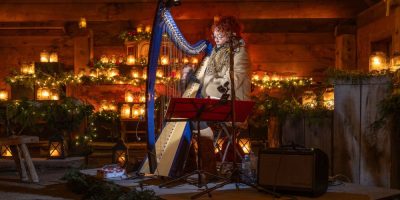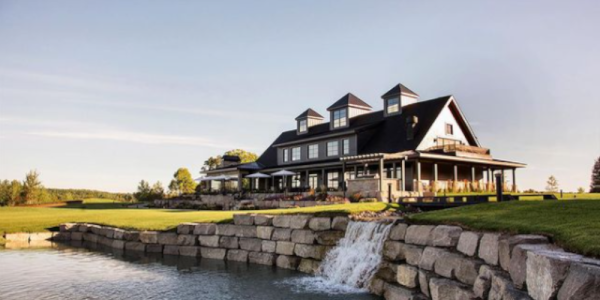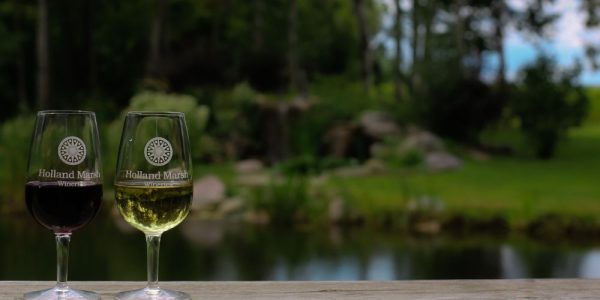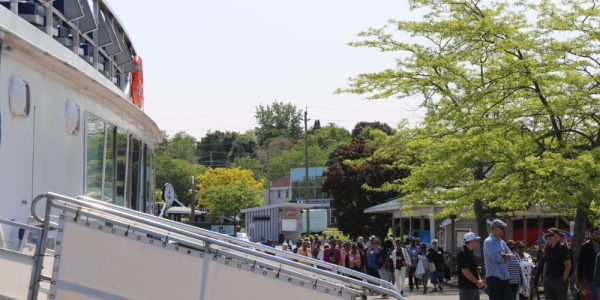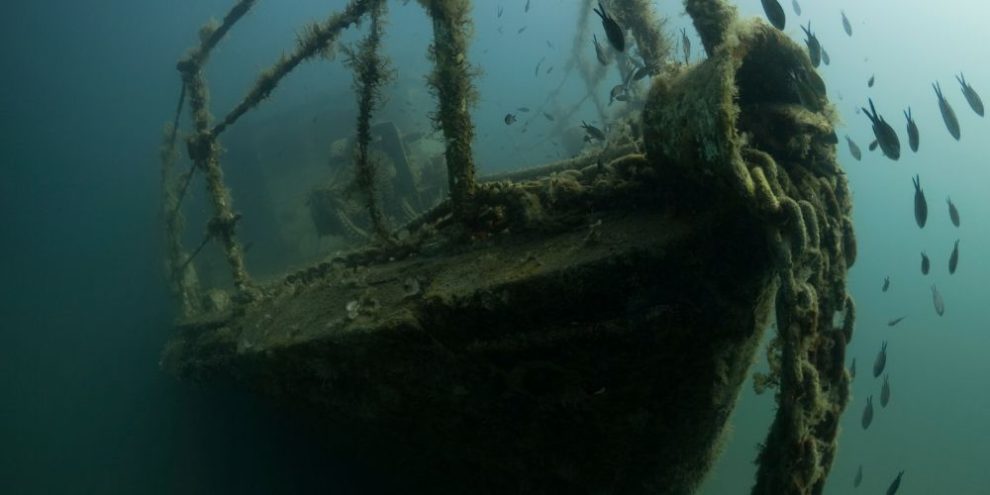
Think Ontario is all forests and calm lakes? Think again. Beneath the surface of some of our favourite cottage-country waters lie the skeletal remains of sunken ships that once carried people, goods, and secrets across Ontario’s waterways. These aren’t just dive spots – they’re underwater time capsules, and you don’t need to be a seasoned scuba diver to explore them.
Here are the most fascinating sunken ships you can snorkel or dive around in Simcoe County and Muskoka, complete with real stories, eerie history, and what’s still waiting for you below.
Barrie's News Delivered To Your Inbox
By submitting this form, you are consenting to receive marketing emails from: Central Ontario Broadcasting, 431 Huronia Rd, Barrie, Ontario, CA, https://www.cobroadcasting.com. You can revoke your consent to receive emails at any time by using the SafeUnsubscribe® link, found at the bottom of every email. Emails are serviced by Constant Contact
J.C. Morrison – Lake Simcoe, Barrie
A paddle steamer that went up in flames, now resting just offshore.
In 1857, the J.C. Morrison—a 150-foot wooden side-wheel paddle steamer—caught fire while docked near Barrie. The crew cut her loose to prevent the flames from reaching the shoreline. She drifted into Kempenfelt Bay and sank in 30 feet of water.
What you’ll see today:
- The charred skeleton of the hull
- The large paddle wheel supports
- The boiler and engine remnants
This wreck is a favorite for beginner divers and even strong snorkelers on clear days. It's eerie how intact parts of her still are, almost like she could rise again on a foggy morning.
Why it matters: This wasn’t just any vessel … it was a lifeline for people and trade in the mid-1800s. She burned just three years after launch, cutting her service short but cementing her legacy under the lake.
Waome – Lake Muskoka, near Keewaydin Island
A glamorous steamer with a tragic end.
Built in 1912 in Gravenhurst, the Waome started it’s life as a floating general store that stopped at cottages and resorts to sell supplies. In the 1920s, she was sold and converted to a passenger ship.
In October 1934, a sudden storm rolled over Lake Muskoka and capsized her. Three people died in the wreck, and the ship sank to the bottom — where she still rests upright.
What’s waiting below:
- A nearly intact wooden hull
- Two decks and cabin structures
- The eerie wheelhouse, still recognizable
- Old-fashioned fixtures preserved by cold freshwater
Why it gives you goosebumps: The Waome isn’t just a shipwreck. It’s a ghost story. The boat is still beautifully preserved, but there’s a somber stillness to it. Divers describe it as peaceful … but heavy.
Bonus: Because she sits at about 70 feet, this one’s best for certified divers. But even reading her story from shore will give you chills.
Sweepstakes – Tobermory (a bit farther, but worth it)
A schooner built in the 1860s and sunk in clear waters you can snorkel.
OK, Tobermory isn’t technically in Simcoe or Muskoka … but it’s close enough for a weekend trip, and it's arguably the most famous snorkeling wreck in Ontario.
The Sweepstakes was a 119-foot two-masted schooner built in 1867. She was damaged and towed into Big Tub Harbour, but sank before repairs could be completed. Unlike many wrecks, she rests in just 20 feet of water and the water here is incredibly clear so it is great for snorkelers and divers at any level.
What’s below the surface:
- A fully visible wooden hull
- Ship ribs and deck still intact
- Schools of fish weaving through timbers
Why it’s bucket list-worthy: She’s one of the most photogenic wrecks in Canada, and her bones tell the story of Ontario’s Great Lakes shipping history. It feels like stepping into the 1800s without even needing scuba gear.
W.L. Wetmore – Tobermory
A lumbering steamer destroyed by a storm and now one of Ontario’s most photogenic wrecks.
The W.L. Wetmore was a 214-foot wooden steam barge built in 1871. On November 29, 1901, she was towing two schooner barges when a fierce storm rolled across Georgian Bay. Pummeled by waves, the Wetmore ran aground near Russell Island and was ripped apart by the wind and surf.
What you can see today:
- Giant boiler still reaching toward the surface
- Engine parts, rudder, and large metal anchor chain
- Hull remains scattered but easily recognizable
Why it’s a favourite: Lying in just 25 feet of water, this wreck is perfect for snorkelers and beginner divers. The boiler makes an impressive sight, even from a glass-bottom boat. It’s one of the most dramatic shallow wrecks in Fathom Five.
Arabia – Tobermory
A deep-water wreck shrouded in mystery—and revered by experienced divers.
The Arabia was a 132-foot barque built in 1853. She was carrying coal in October 1884 when a fierce storm forced her toward the rocks near Echo Island. The captain tried to steer her to safety, but it was too late. The ship struck bottom and sank, taking all hands with her.
Still visible beneath the surface:
- Majestic bowsprit still jutting forward
- Anchor and windlass
- Wheel and rigging preserved by frigid water
Why divers revere it: Resting in 110 to 120 feet of water, the Arabia is one of the most haunting and well-preserved wrecks in Ontario. Only experienced divers with advanced certifications should attempt this one … but those who do call it a once-in-a-lifetime experience.
More to explore in Tobermory
Tobermory isn’t called the freshwater scuba capital of Canada for nothing. Beyond the famous Sweepstakes, Arabia, and W.L. Wetmore, Fathom Five National Marine Park is home to over 20 historic shipwrecks—each with its own story to tell.
Here are a few more worth adding to your Ontario underwater bucket list:
- Forest City: In June 1904, the Forest City—a steamer originally built as a schooner barge—slammed into Bear’s Rump Island in thick fog. The ship sank quickly in over 150 feet of water. The depth and eerie stillness make it one of the most technical (and unforgettable) dives in Ontario. Best for experienced divers only.
- Charles P. Minch: The Minch was a three-masted schooner built in 1867. She sank in 1898 during a storm and now lies partially buried in sand and debris. Conditions can be variable, but it’s a cool wreck for history lovers, especially when visibility is high.
- Caroline Rose: Originally a Grand Banks schooner from Newfoundland, the Caroline Rose was deliberately scuttled in 1990 to create a safe, engaging dive site. Unlike the tragic sinkings nearby, this one was planned. That makes it ideal for beginner to intermediate divers who want the full wreck experience without the drama.
- Niagara II: This 182-foot sand sucker was also intentionally sunk in 1999 to give divers a fresh site to explore (and take pressure off the historical wrecks). There's even a piano on board … yes, really. A playful twist in a sea of history.
- Newaygo: Launched in 1890, this barge ran aground in 1903. The force of the storm splintered her across a wide area. Great for mid-level divers looking for something more rugged and raw.
- Philo Scoville: She ran aground and sank in 1889 while sailing Georgian Bay. Despite the wreck, parts of her bow and anchor setup remain remarkably intact. This site feels frozen in time—ideal for underwater photographers and history buffs.
- Avalon Voyager II: Originally used in Newfoundland’s fishing industry, this vessel later became a floating restaurant. It was vandalized and burned in 1980, then abandoned. It’s a piece of modern maritime misfortune—and easily accessible for snorkelers and beginner divers.
- China: Wrecked in 1883, the China broke apart near shore and now lies in just 3 metres of water. This wreck is very family-friendly as it's perfect for a mask, snorkel, and a sunny day.
- John Walters: This 1852 schooner sank in 1883 and now rests in about 5 metres of water. First-timers or snorkelers who want a shipwreck experience without needing full scuba gear.
- James C. King: Schooner-barge lost in the same storm that sank the Wetmore. Wrecked in November 1901, the 175‑ft vessel slid down a steep slope into 30 m (95 ft) of water. The rudder and bow post may be found in shallows.
- Philo Scoville: Three-masted schooner wrecked in a storm (Oct 1889). Lies in 7–30 m (25–95 ft) of water with the bow section and bowsprit deeper down. Anchors lie ~30 m (100 ft) east of the main wreck.
- Truellen: A yacht repurposed as an official dive site. Wrecked in 1972 on Greenfield Shoal, raised and towed to the Cove–North Otter channel.
- Points West: A purpose-sunk wooden guide boat (1984 dive site). Deliberately sunk near Cove Island at 15 m (50 ft) depth.
- Cascaden: An 1871 schooner wreck spread across bedrock. Now lies in a wide debris field at just 6 m (20 ft).
- Unidentified Wreck: A mystery ship with no records, just structural remains. Scattered across 120 m at 15–21 m (50–70 ft). Includes hull sections, centreboard trunk, and rudder.
Planning tips: What to know before you go
- Visibility matters. Spring and early summer offer clearer water, especially in Lake Simcoe. Later in the season, algae can cloud things up.
- Bring the right gear. Even shallow snorkel spots benefit from a wetsuit and fins. For deeper dives (like the Waome), you’ll need proper scuba certification.
- Respect the wrecks. These are protected heritage sites. Look, but don’t touch—and never remove anything.
- Local charters help. In Muskoka and Barrie, you’ll find tour operators who can guide you safely to the sites and share even more historical detail.
Dive into history, literally
Ontario’s shipwrecks aren’t just cool photo ops ... they’re stories frozen in time. These vessels were once full of life, steam, and purpose. Now they rest beneath the water, waiting to share their secrets with those curious enough to look below the surface.
So next time you're looking for an adventure, pack your snorkel or dive gear and go meet a ghost ship.



